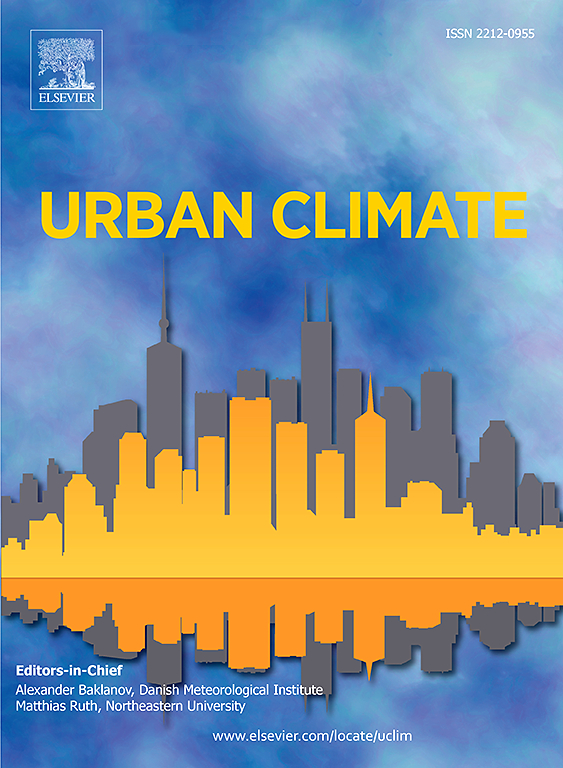Street-level surface and air temperatures in the Urban Center of Málaga, Spain
IF 6.9
2区 工程技术
Q1 ENVIRONMENTAL SCIENCES
引用次数: 0
Abstract
Increasing urbanization is leading to rising temperatures in cities, especially in their central areas, where artificial covers, street canyons and human-induced heat release are more common. This urban microclimate is especially critical in historical centers, as the protection of these areas' cultural assets hinders the introduction of adaptation measures. In this context, this study developed a methodology to characterize the microclimate in historical city centers, using the Mediterranean city of Málaga in southern Spain as a paradigmatic case study. To this end, field measurements were carried out by using a bicycle mobile station and a handheld thermal imaging camera along the so-called Picassian route, covering eleven different streets and eight historical buildings (eleven façades) where air and surface temperatures were collected. The results showed significant differences in the values of air and surface temperatures, so studies of urban microclimate should consider both types of temperatures together, and especially the temperature of building façades, which is often ignored due to the lack of open data about it but has notable different patterns. An analysis of the relationship between field data and a range of spatial factors related to the morphology and surface artificiality of urban areas revealed that shading and tree planting might provide a solution to heat mitigation. For historical centers with important space constraints, these solutions may consist of installing awnings and green façades.西班牙Málaga城市中心的街道地面和空气温度
越来越多的城市化导致城市气温上升,尤其是在城市的中心地区,在那里,人工覆盖物、街道峡谷和人为的热量释放更为常见。这种城市小气候在历史中心尤为重要,因为对这些地区文化资产的保护阻碍了适应措施的引入。在此背景下,本研究开发了一种方法来表征历史城市中心的小气候,并以西班牙南部的地中海城市Málaga为范例进行了研究。为此,使用自行车移动站和手持式热像仪沿着所谓的皮卡斯路线进行实地测量,覆盖了11条不同的街道和8座历史建筑(11个faades),收集了空气和地表温度。结果表明,大气温度和地表温度的数值存在显著差异,因此城市小气候的研究应同时考虑这两种温度,特别是建筑立面温度,由于缺乏开放的数据而经常被忽视,但具有显著的不同模式。实地数据与一系列空间因素之间的关系分析表明,遮阳和植树可能是缓解热量的一种解决方案。对于具有重要空间限制的历史中心,这些解决方案可能包括安装遮阳篷和绿色庭院。
本文章由计算机程序翻译,如有差异,请以英文原文为准。
求助全文
约1分钟内获得全文
求助全文
来源期刊

Urban Climate
Social Sciences-Urban Studies
CiteScore
9.70
自引率
9.40%
发文量
286
期刊介绍:
Urban Climate serves the scientific and decision making communities with the publication of research on theory, science and applications relevant to understanding urban climatic conditions and change in relation to their geography and to demographic, socioeconomic, institutional, technological and environmental dynamics and global change. Targeted towards both disciplinary and interdisciplinary audiences, this journal publishes original research papers, comprehensive review articles, book reviews, and short communications on topics including, but not limited to, the following:
Urban meteorology and climate[...]
Urban environmental pollution[...]
Adaptation to global change[...]
Urban economic and social issues[...]
Research Approaches[...]
 求助内容:
求助内容: 应助结果提醒方式:
应助结果提醒方式:


